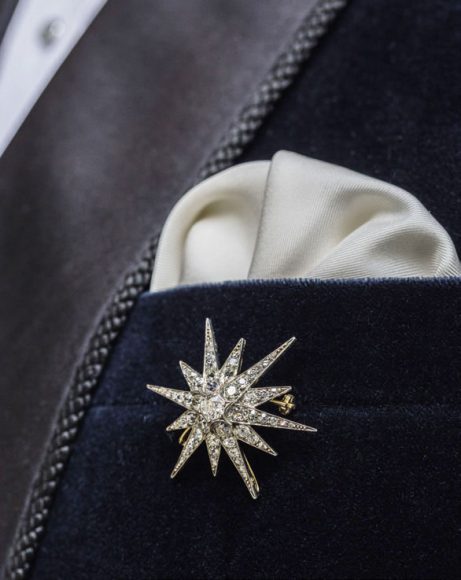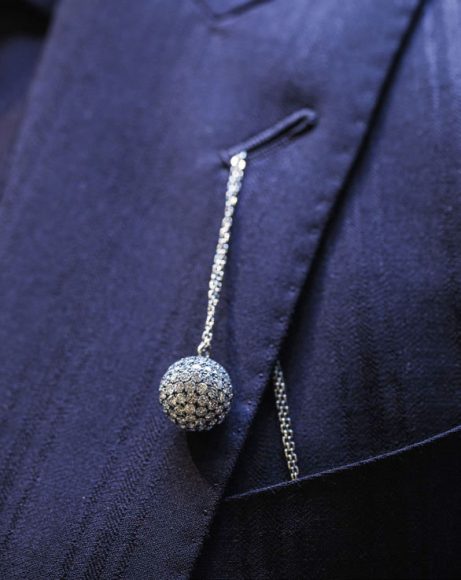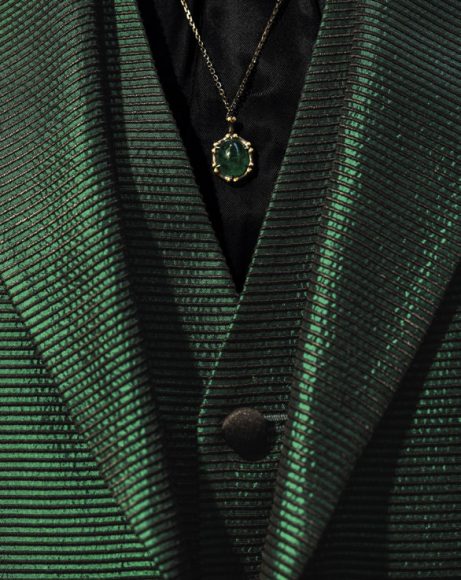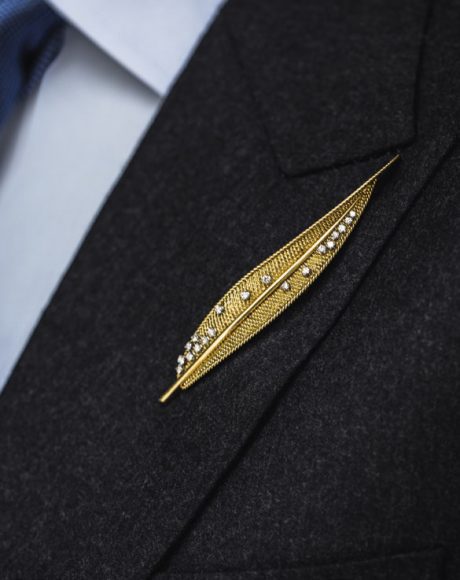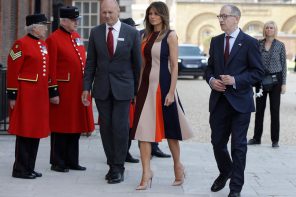We think of jewelry as a woman’s prerogative, but history knows better.
“In ancient times, and for centuries thereafter, beautiful stones and gems were considered an auspicious adornment for men,” Qatari sheikh Hamad bin Abdullah Al Thani — a London arts collector and socialite — writes in the foreword to James Sherwood’s delicious “Jewelry for Gentlemen” (Sept. 11, Thames & Hudson, $45, 256 pages, 275 illustrations). “The wearing of jewelry on the head, around the neck or on the fingers was not only a symbol of power and wealth: It also possessed … a cosmic meaning. Men wore specific gems and stones to balance their horoscopes, bring good health and bring protection to them and their families.”
For Al Thani, there have been three creative peaks in jewelry:
· Persia’s Achaemenid Empire, its conquest by Alexander the Great and the post-Alexandrian Hellenistic age (6th through 4th centuries B.C.);
· Islam’s Mughal Empire in India (the 16th through 18th centuries);
· And the fusion of Indian and Western styles and techniques, culminating in the sleekly elegant Art Deco style of the 1920s.
But could men’s jewelry be having another moment? Sherwood, fashion history editor of The Rake, writes that while gem-set dress studs, cufflinks, stickpins and cigarette cases had gone out of style, “men’s desire to wear jewelry hasn’t been so strong since the 1970s.” Credit trendsetting actors, athletes and pop musicians such as WAG March cover guy David Beckham, Lewis Hamilton, Aldis Hodge, Jared Leto, Cristiano Ronaldo, Alexander Skarsgård, Will Smith and Pharrell Williams, to name a few, as well as the gay rights’ movement and the advent of gay marriage. The recent influence of “Mad Men,” which brought back the tie slide, and good economic times have also helped.
Unlike female celebrities, who borrow jewels for red-carpet branding, Sherwood writes, their male counterparts tend to buy period and designer jewelry as an investment, one that has outperformed the housing market in England. (The rarest and most coveted pieces of vintage jewelry have risen in value more than 80 percent in the last 10 years, while average house prices have risen 47 percent.)
Suddenly, jeweled tie clips, stickpins worn on lapels and cufflinks are studding the red carpet while wedding bands, signet rings and bracelets are gracing every space from the corner office to the cocktail party. Helping the gents make their selections are such familiar names as Boucheron, Cartier, Tiffany & Co., Van Cleef & Arpels and David Yurman as well as not-so-familiar names — Solange Azagury-Partridge, Theo Fennell, Shaun Leane, Lucas Rarities, Ara Vartanian and Stephen Webster — all of whom are among those featured in these pages, enhanced by Andy Barnham’s special photography.
But for our money, the real selling points of the book are the images and discussion of the gentlemen who vie in beauty with the jewelry that adorns them. There’s a black-tied Fred Astaire posing to promote the Cole Porter musical “Gay Divorce” in London’s West End in 1933, his pinky ring, links and studs echoing his sartorial idol, the dapper Edward, Prince of Wales (later Edward VIII and Duke of Windsor). The duke’s flourishes included Cartier’s stacked Trinity pinky ring in 18-karat rose, white and yellow gold.
There’s Clark Gable sporting a pinstripe suit and a yellow-gold anchor-link bracelet inscribed with his initials on the plate and “I LOVE YOU, CL” on the reverse. It was a gift from the actress whom many said was the great love of his life, third wife Carole Lombard, who died in a plane crash in 1942 returning to Los Angeles from a war bond rally in her native Indiana. (The bracelet sold at Christie’s New York in 2006 for $7,800.)
Bracelets, particularly ID bracelets like those sported by the U.S. military in World War II, were part of the armor of the T-shirted, blue-jeaned screen rebels of the 1950s and ’60s. Marlon Brando, Montgomery Clift and James Dean all wore them, while Elvis Presley “seemed to give gold ID bracelets to fans, groupies and security guards the way tennis players throw sweatbands,” Sherwood writes. Paul Newman wore a yellow-gold ID bracelet — along with a watch, a wedding band and an unidentified vaguely Mexican pendant offset by his unbuttoned shirt — in the 1962 film “Sweet Bird of Youth.”
Meanwhile, some stars looked to a higher power for their pendants. The book includes a 1963 photo of Steve McQueen exercising at a punching bag at Hollywood’s Paramount Studios, a 14-karat gold St. Christopher’s medal, given him by first wife Neile Adams, flying up from his neck. (Though he was known as a motorcycle-riding, racecar-driving rebel, McQueen also has a conservative side that manifested itself in his flag-waving patriotism and penchant for ladylike brunettes, as reflected in his three wives, who also included Ali MacGraw and Barbara Minty.)
Sadly, many of these stars are unknown to today’s audience. But the younger generation is well-represented in these pages. The edgy Tom Hardy rocks a Gucci suit and an antique yellow-gold saber-shaped tie slide set with rubies and diamonds at the London premiere of “Dunkirk” last year. Complementing a black sequined ensemble, the model Lucky Blue Smith layers on rings, chains and bracelets from Eli Halil’s fine jewelry collection for Paris Fashion Week 2016.
Perhaps best of all, Jared Leto affixes a 1957 sapphire-and-diamond Cartier brooch to his Gucci shirt collar for the 2016 Met Gala in Manhattan. The blue of the emerald-cut stone matches the color of his eyes.
For more, visit thamesandhudsonusa.com.

